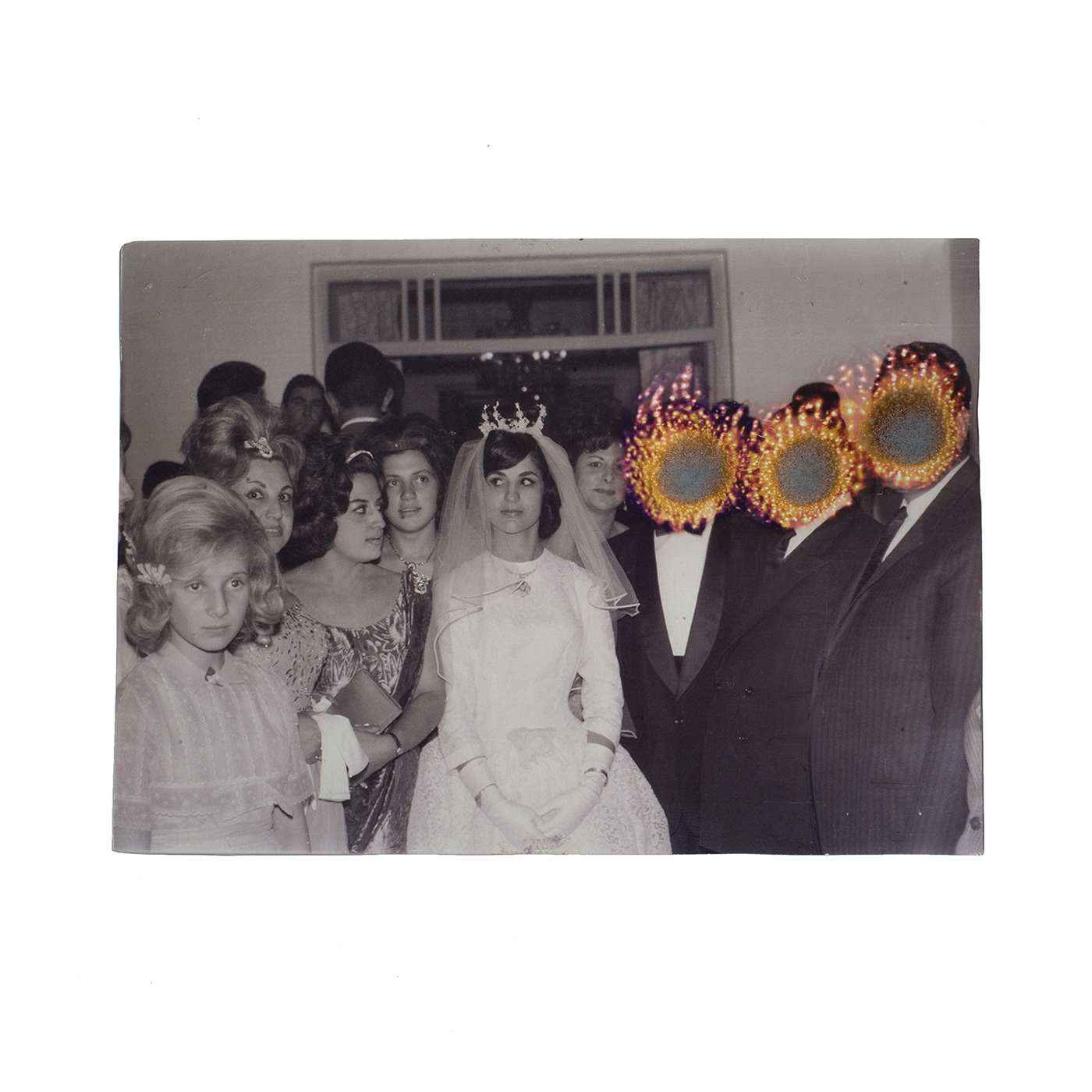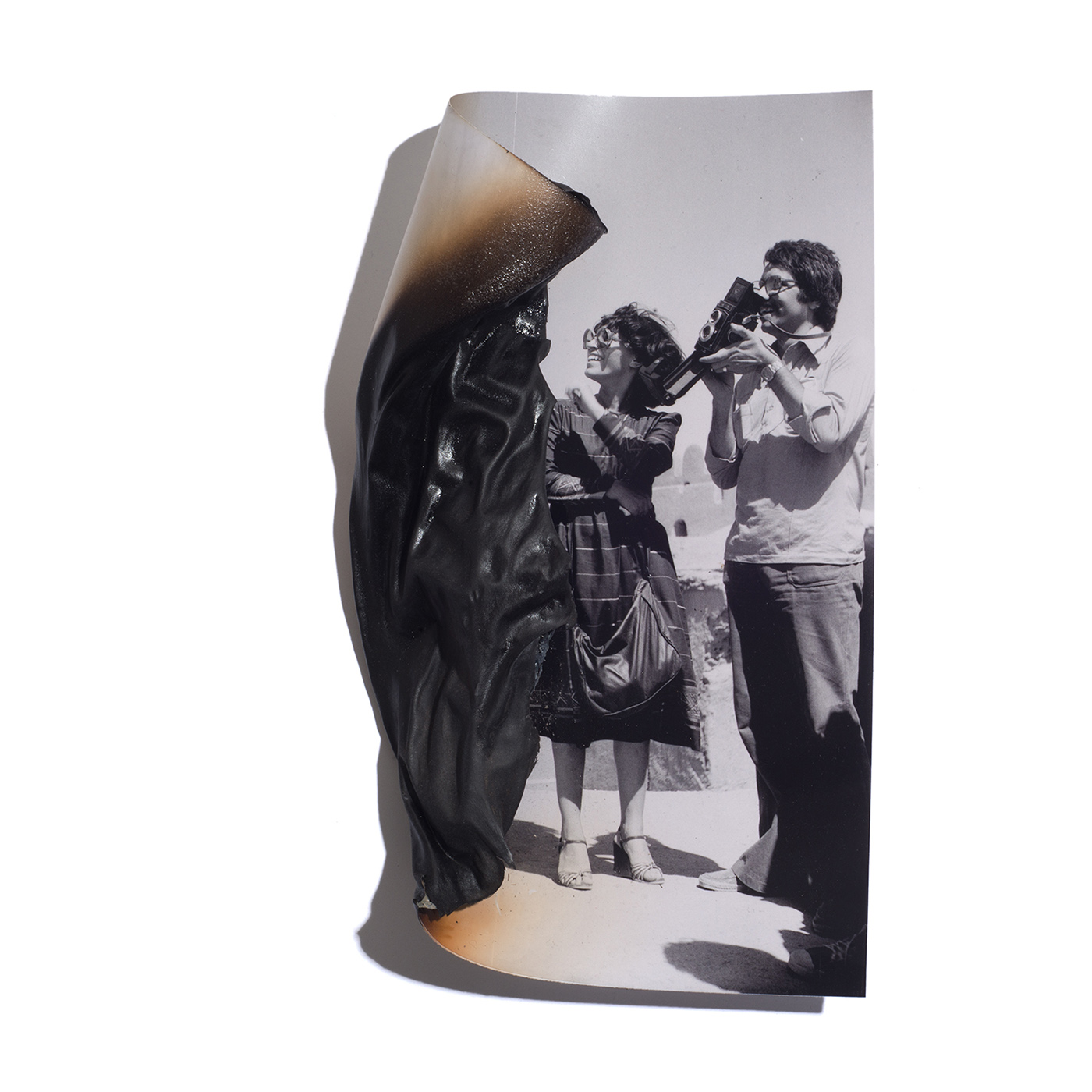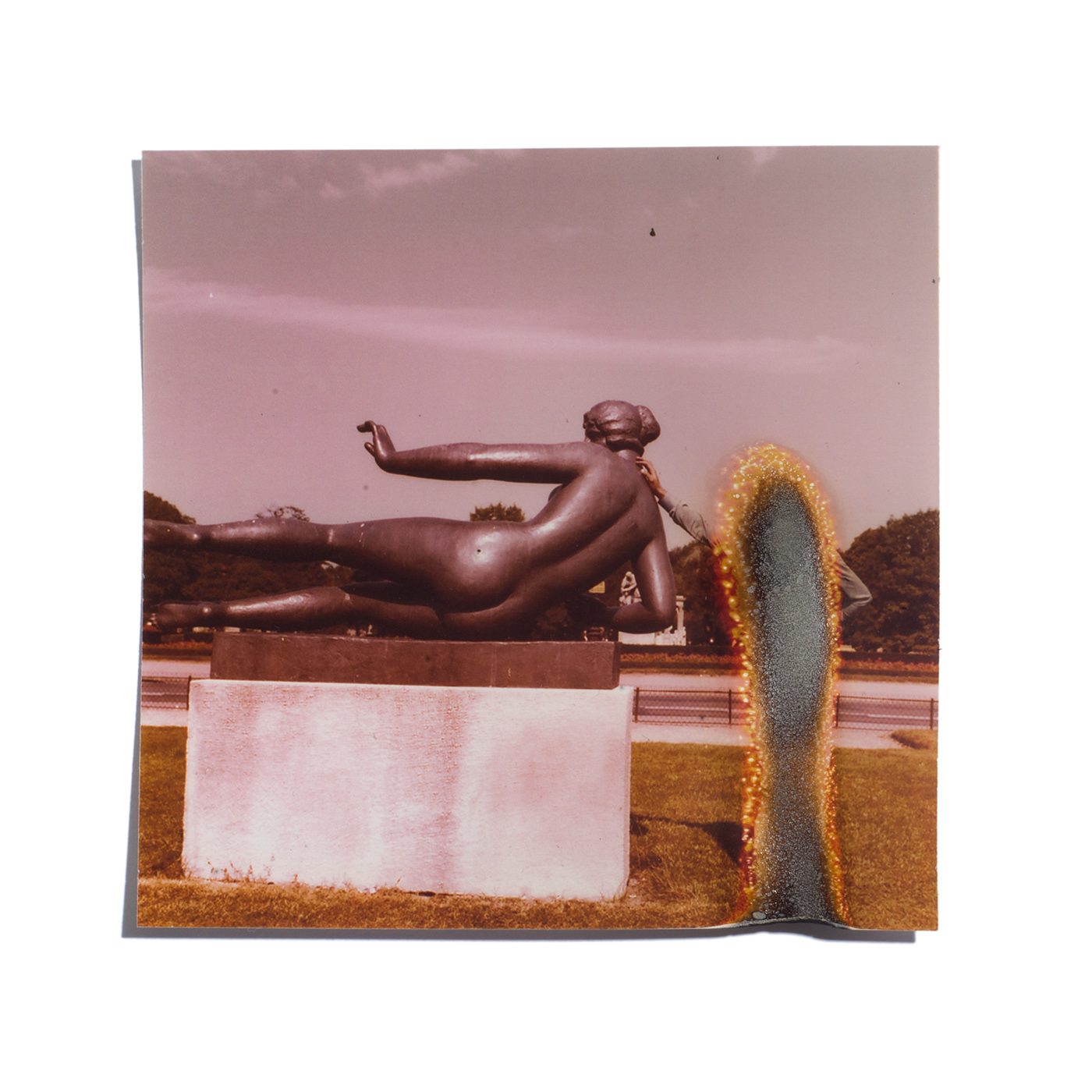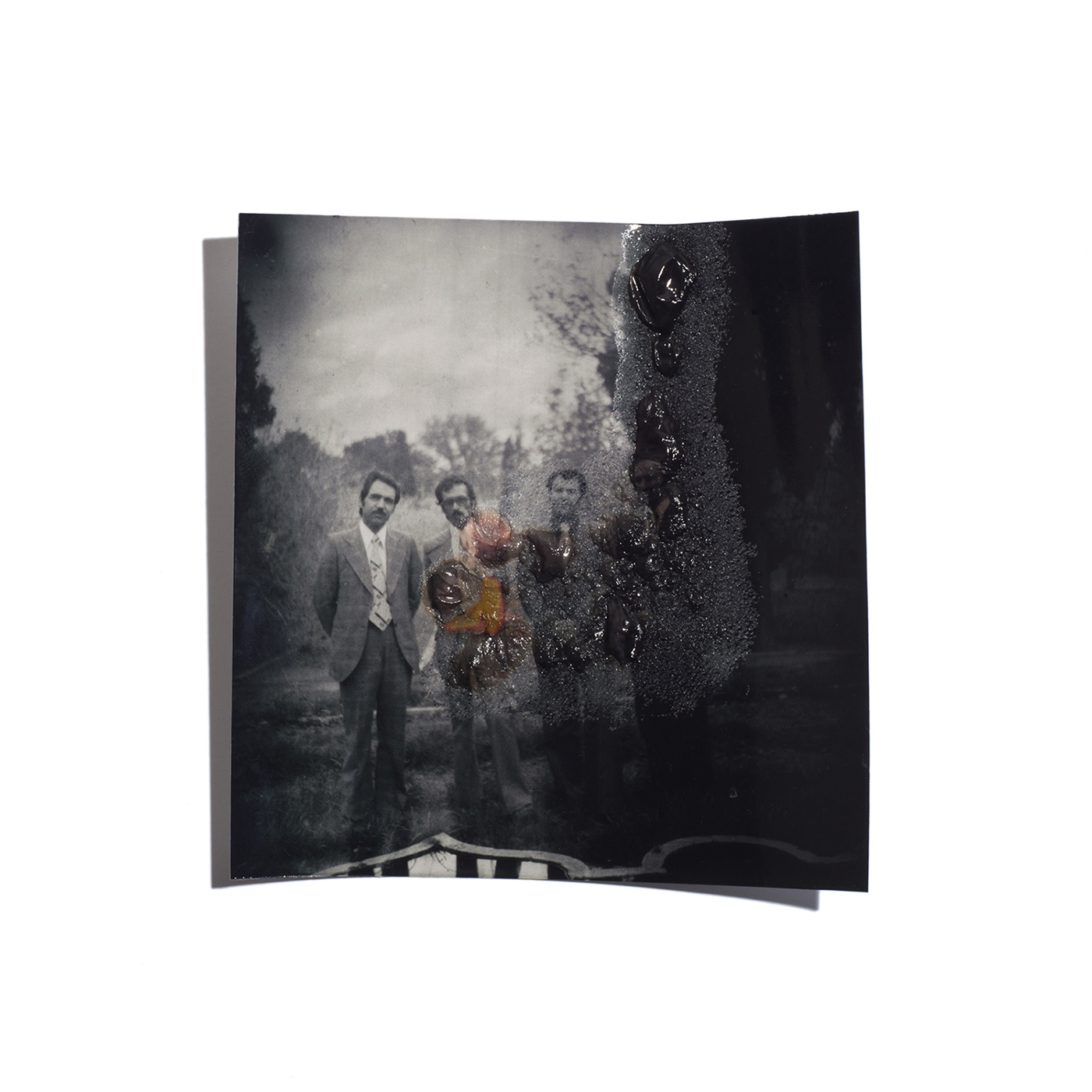






Artist's Statement
Fatemeh Baigmoradi
My parents have only a few photos of themselves from before the Islamic Revolution in Iran. My obsession with these photos, and with the photos we do not have, led to this project: It’s Hard to Kill.
Iran's revolution began with a popular democratic movement and ended with the establishment of an Islamic state. Before the Iranian Revolution, opposition groups tended to fall into three major categories: constitutionalist, (including National Front), Marxist, and Islamist. All three opposition parties participated in the 1979 Revolution, but the Islamist majority began to slander and condemn the other parties; eventually they began to arrest, force into exile, and execute members of the opposition. My father had been a member in the National Front party that disbanded several years after the revolution. As could be expected anywhere, the members of the party occasionally took photos of their meetings, as well as social events. Images made as proof of social status and rank became documents to be used against them, in the space of a few years.
Thirty years ago, a few years after the Islamic revolution in Iran, my father burned a number of photos that referenced his membership in that specific political party. My father, and others, burned these photos due to the immediate risk of arrest. The act of disappearing photos was highly emotional, even if not rational in our Age of Mechanical Reproduction; the fear and anxiety that the society experienced at that time was acute. I have explored other people’s family archives to create the work, to imagine the moments when my father burnt the photos. I was fascinated by this fearful ritual meant to protect an individual, and what it means to lose photographic evidence of a family’s history. I am making my work based on this true story that has happened over and over again, for different people from different nations, often after social revolutions. The halo around some of the individuals in the photos, caused by burning, brings into attention a few important questions about memory, history, and their representations: How does self-censorship affect our memory and personal history? Is the halo a sign of loss of history or a sign of bringing back the aura to the photographs? Does it omit the individual from history, or add non-representational characteristics to an individual’s presence?
In Persian miniature painting, miniaturists would not paint the face of a holy person, instead they would paint an aura of fire or light around their heads. My burned photographs exhibit similar visual forms, at some level certainly hinting at a kind of holiness. Old family photos, as objects, have always held an important aura—even, maybe, holiness—for me. Who was chosen to burn in these photographs? On what basis? Does the removal of an individual protect that person, or the safety of others who are in the photos?
Alison Landsberg stated that prosthetic memories are those not strictly derived from a person’s lived experience, and that although they are not organically based (meaning an authentic experience) they are still experienced with the body, and become a part of one’s personal archive of experience. I rebuilt these memories, although they are not directly mine. I heard them, and I live their consequences. I explore the idea of prosthetic memory, accessing the memories of my father through this burning of old family photographs.
In this project, I have collected photographs from other families and reproduced them, before treating them with fire. I make them look convincingly original, and I try to establish a relationship between the real world and the prosthetic world.
This project includes sculptural photographs, a collection of sealed jars that contain the ashes of burned photographs, and two videos that hint at the burning process, even if recreated and fictional. The jars represent the photographs that did not survive the fire I applied to them. The memory of the photograph remains intact through the sealing process; I keep them safe, as part of the history, as fully cremated remains. Their form has changed completely, but can the memory persist?
In one video, there are several hands that slowly place some photographic prints in the fire. In the installation of the work, the viewer walks by the video to a long wall exhibiting the burned photographs themselves, as well as sealed jars of ashes; all is presented on red shelves against a red wall. The harsh red background is both regal and violent, recalling the people who lost their lives during this era.
The second video on display looks much like the first, but it runs backwards. The photographs begin on fire, and gradually emerge out of the fire, intact and held by human hands. The final piece in the installation is a pile of burned and unburned photos, and viewers are invited to sift through these, to hold them and engage with them themselves.


